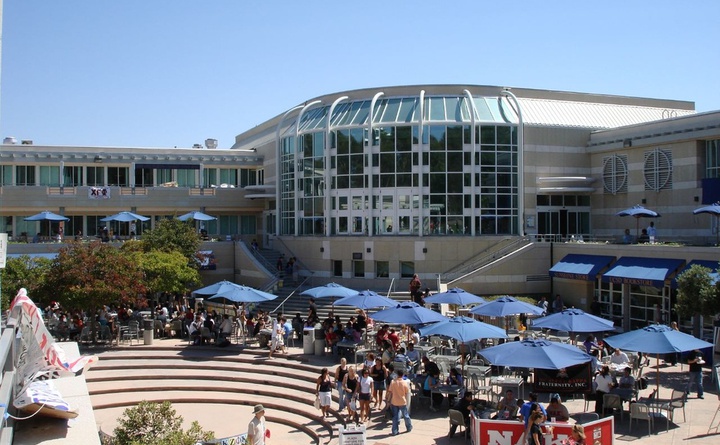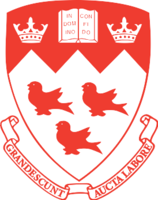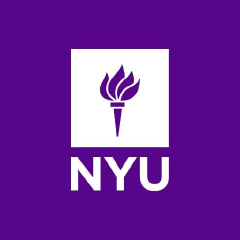University of California-San Diego
Founded 1903 as Marine Biological Station of San Diego, became Scripps Institution of Biological Research 1912, and University of California Scripps Institution of Oceanography 1925. Acquired present title 1960.
Funding:
Public
Accreditation:
Western Association of Colleges and Schools
Grades 4
Languages 1
Divisions 10
- Arts and Humanities Department/DivisionFields of study: Ancient Civilizations, European Studies, Italian, Asian Studies, Film, Dance, Russian, Japanese, Visual Arts, German, Theatre, Music, Environmental Studies, Philosophy, Literature, Arts and Humanities, History
- Biological Sciences Department/Division
- International Relations and Pacific Studies Department/DivisionFields of study: International Relations
- Physical Sciences Department/Division
- Social Sciences Department/DivisionFields of study: Anthropology, Linguistics, Sociology, Communication Studies, Political Sciences, Psychology, Economics
- Oceanography InstituteFields of study: Marine Science and Oceanography
- Engineering School
- Management School
- Medicine SchoolFields of study: Medicine
- Pharmacy and Pharmaceutical Sciences School
Requirements
- Admission details: Graduation from high school or equivalent, and College Board SAT or ACT examination. TOEFL test for foreign students
Short online courses 104
- Achieving Your Optimal Performance
- Advanced Algorithms and Complexity
- Advanced Data Structures in Java
- Algae Biotechnology
- Algorithmic Design and Techniques
- Algorithmic Toolbox
- Algorithmic Toolbox (Arabic)
- Algorithms and Data Structures Capstone
- Algorithms on Graphs
- Algorithms on Strings
- Analyze Your Genome!
- Basic Data Processing and Visualization
- Big Data - Capstone Project
- Big Data Analytics Using Spark
- Big Data Integration and Processing
- Big Data Modeling and Management Systems
- Bioinformatics Capstone: Big Data in Biology
- Biology Meets Programming: Bioinformatics for Beginners
- Capstone Project: Teaching Impacts of Technology
- Capstone: Analyzing (Social) Network Data
- Code Free Data Science
- Combinatorics and Probability
- Comparing Genes, Proteins, and Genomes (Bioinformatics III)
- Computational Thinking for K-12 Educators Capstone
- Computational Thinking for K-12 Educators: Abstraction, Methods, and Lists
- Computational Thinking for K-12 Educators: Conditional Loops and If Statements
- Computational Thinking for K-12 Educators: Nested If Statements and Compound Conditionals
- Computational Thinking for K-12 Educators: Sequences and Loops
- Computational Thinking for K-12 Educators: Variables and Nested Loops
- Computer Graphics
- Converting Challenges into Opportunities
- Creating Virtual Reality (VR) Apps
- Data Structures
- Data Structures Fundamentals
- Data Structures and Performance
- Data Structures: An Active Learning Approach
- Delivery Problem
- Deploying Machine Learning Models
- Design Principles: an Introduction
- Design Thinking and Predictive Analytics for Data Products
- Designing, Running, and Analyzing Experiments
- Drug Commercialization
- Drug Development
- Drug Discovery
- Dynamic Programming: Applications In Machine Learning and Genomics
- Finding Hidden Messages in DNA (Bioinformatics I)
- Finding Mutations in DNA and Proteins (Bioinformatics VI)
- Genome Assembly Programming Challenge
- Genome Sequencing (Bioinformatics II)
- Genomic Data Science and Clustering (Bioinformatics V)
- Graph Algorithms
- Graph Algorithms in Genome Sequencing
- Graph Analytics for Big Data
- Hacking COVID-19 — Course 1: Identifying a Deadly Pathogen
- Hacking COVID-19 — Course 2: Decoding SARS-CoV-2's Secrets
- Hadoop Platform and Application Framework
- How Virtual Reality Works
- Human-Centered Design: an Introduction
- Information Design
- Input and Interaction
- Interaction Design Capstone Project
- Internet of Things Capstone V2: Build a Mobile Surveillance System
- Internet of Things Capstone: Build a Mobile Surveillance System
- Internet of Things V2: DragonBoard™ bring up and community ecosystem
- Internet of Things V2: Setting up and Using Cloud Services
- Internet of Things: Communication Technologies
- Internet of Things: How did we get here?
- Internet of Things: Multimedia Technologies
- Internet of Things: Sensing and Actuation From Devices
- Internet of Things: Setting Up Your DragonBoard™ Development Platform
- Introduction to Algae
- Introduction to Big Data
- Introduction to Big Data (Arabic)
- Introduction to Genomic Data Science
- Introduction to Graph Theory
- Learn to Teach Java: Boolean Expressions, If Statements, and Iteration
- Learn to Teach Java: ArrayLists and 2D Arrays
- Learn to Teach Java: Sequences, Primitive Types and Using Objects
- Learn to Teach Java: Writing Classes and Arrays
- Learn to Teach Java: Inheritance and Recursion
- Machine Learning Fundamentals
- Machine Learning With Big Data
- Mastering the Software Engineering Interview
- Mathematical Thinking in Computer Science
- Meaningful Predictive Modeling
- Minecraft, Coding and Teaching
- Molecular Evolution (Bioinformatics IV)
- NP-Complete Problems
- Networking and Volunteerism for Career Success
- Number Theory and Cryptography
- Object Oriented Programming in Java
- Our Energy Future
- Probability and Statistics in Data Science using Python
- Python for Data Science
- So You Want to Be a Biomedical Engineer
- Social Computing
- String Processing and Pattern Matching Algorithms
- Teaching Impacts of Technology: Data Collection, Use, and Privacy
- Teaching Impacts of Technology: Fundamentals
- Teaching Impacts of Technology: Global Society
- Teaching Impacts of Technology: Relationships
- Teaching Impacts of Technology: Workplace of the Future
- The Science of Parenting
- User Experience: Research & Prototyping



